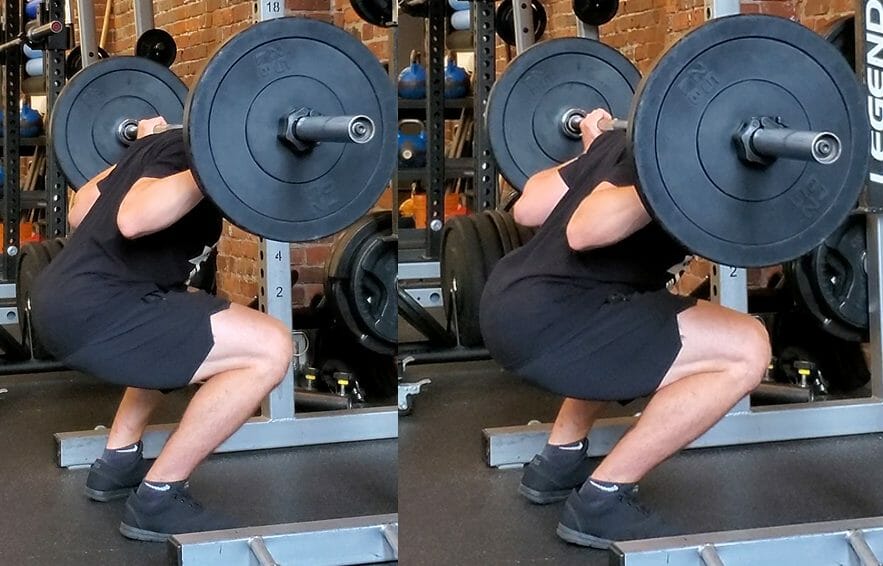
The High-Bar Squat for Powerlifters: A Tool for Quad Strength and Variation
While the low-bar squat reigns supreme in powerlifting for its ability to move the most weight, the high-bar squat is an invaluable tool in a serious lifter's arsenal. It's not just for Olympic weightlifters; when used strategically, the high-bar squat can build massive quad strength, improve your core, and provide a much-needed stimulus variation to break through plateaus. This guide will cover the technique, benefits, and programming of the high-bar squat for powerlifters.

High-Bar vs. Low-Bar: The Key Differences
As we've covered in our Squat Stance Deep Dive, the primary difference is bar placement, which changes everything else.
- Bar Position: The bar rests directly on top of the trapezius muscles, creating a higher center of gravity.
- Torso Angle: The defining feature is a very upright torso.
- Joint Mechanics: This upright posture requires significant forward knee travel and a greater degree of ankle dorsiflexion compared to the low-bar squat.
- Muscle Emphasis: The movement is heavily quad-dominant. While the glutes are still involved, the quads are the primary movers.
Why Should a Powerlifter High-Bar Squat?
- Directly Builds Quad Strength: If your weakness in the low-bar squat is quad strength (i.e., you tend to pitch forward out of the hole), the high-bar squat is the most specific accessory you can do. It directly targets and strengthens the muscles needed to keep your chest up.
- Upper Back and Core Strength: Maintaining an upright torso under a heavy load builds incredible strength in the thoracic extensors and the entire core.
- Stimulus Variation: Using the high-bar squat for an off-season or hypertrophy block can provide a new stimulus for growth while giving your hips and lower back a different stress pattern than constant low-bar squatting.
- Improves Positional Strength: It teaches you how to stay upright and can improve your overall body awareness and motor control in the squat pattern.
How to Program the High-Bar Squat
- As a Primary Squat Variation: During a hypertrophy or general strength block, you can substitute your low-bar squat with the high-bar squat for 4-8 weeks. Focus on volume, working in the 3-5 sets of 5-10 reps range.
- As a Secondary Accessory Lift: After your main low-bar squat work, you can perform high-bar squats for higher reps (8-12) to accumulate more quad-focused volume.
Many elite powerlifters and coaches, including those at Juggernaut Training Systems, advocate for using the high-bar squat in the off-season to build the raw leg strength needed for a bigger low-bar squat.
The high-bar squat isn't just an alternative to the low-bar squat; it's a powerful tool to build it. By using it to specifically target your quads and upper back, you can address key weaknesses that may be holding your competition squat back. Embrace the variation, build your quads, and watch it translate to a more powerful and stable low-bar squat on the platform.








